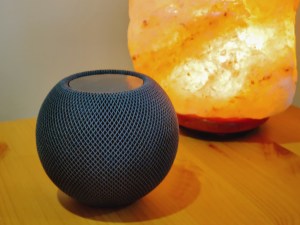On our most recent IoT Podcast, Dennis called into our podcast hotline with a great question about Thread. Yes, it seems like we’re talking about Thread quite a bit lately. However, this is a new standard for the IoT and it has backing from all of the major players.
Dennis is concerned about how his current WiFi devices in his smart home will interact with Thread devices. He also wants to know if he can connect to Thread devices remotely and if he’ll just have one single app for his smart home in the future.

These are all valid concerns but there’s no need to worry.

The small speaker is currently the only device in my smart home that can bridge the Thread network devices to my WiFi network. I’ll be ordering the new AppleTV 4K which can also do the same.
And I expect new smart speakers and displays from other brands will act as Thread Border Routers too. Folks who want to keep using their existing WiFi devices will likely see Thread bridges available, which would replicate this functionality.
So Dennis’s Google Home household might need such a bridge. Or perhaps the next iteration of Google Home products will support Thread natively. In either case, all of his smart home devices will still be able to speak with each other. And since devices on Thread networks with a Border Router can access your wireless network, you’ll also have remote access to them.
That part is no different than any other current smart home product that supports remote access. For example, I was out and about last weekend and decided to see if the temperature at home was any different from where I was. I opened up the Eve app on my phone and was able to see the temps outside my house being relayed from the Thread-enabled Eve Weather I recently reviewed.
In terms of having one app to control the smart home, Thread really has nothing to do with that directly.
Instead, we’ll have to wait and see if Project CHIP brings some unification. And ultimately, this is up to the device makers who probably want their own applications to get some data from their customers for support and marketing reasons at a minimum.
To hear Dennis’s question in full, as well as our discussion on the topic, tune in to the IoT Podcast below:
